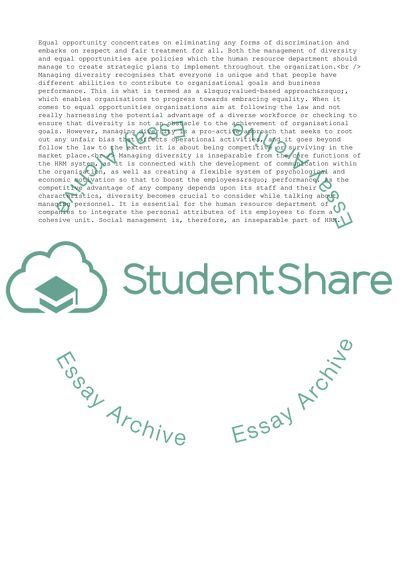Cite this document
(Concepts of Equal Opportunities Coursework Example | Topics and Well Written Essays - 1500 words, n.d.)
Concepts of Equal Opportunities Coursework Example | Topics and Well Written Essays - 1500 words. Retrieved from https://studentshare.org/management/1540983-current-issues-in-hrm-final-report-build-up-from-the-draft-report-id-no78155928
Concepts of Equal Opportunities Coursework Example | Topics and Well Written Essays - 1500 words. Retrieved from https://studentshare.org/management/1540983-current-issues-in-hrm-final-report-build-up-from-the-draft-report-id-no78155928
(Concepts of Equal Opportunities Coursework Example | Topics and Well Written Essays - 1500 Words)
Concepts of Equal Opportunities Coursework Example | Topics and Well Written Essays - 1500 Words. https://studentshare.org/management/1540983-current-issues-in-hrm-final-report-build-up-from-the-draft-report-id-no78155928.
Concepts of Equal Opportunities Coursework Example | Topics and Well Written Essays - 1500 Words. https://studentshare.org/management/1540983-current-issues-in-hrm-final-report-build-up-from-the-draft-report-id-no78155928.
“Concepts of Equal Opportunities Coursework Example | Topics and Well Written Essays - 1500 Words”. https://studentshare.org/management/1540983-current-issues-in-hrm-final-report-build-up-from-the-draft-report-id-no78155928.


